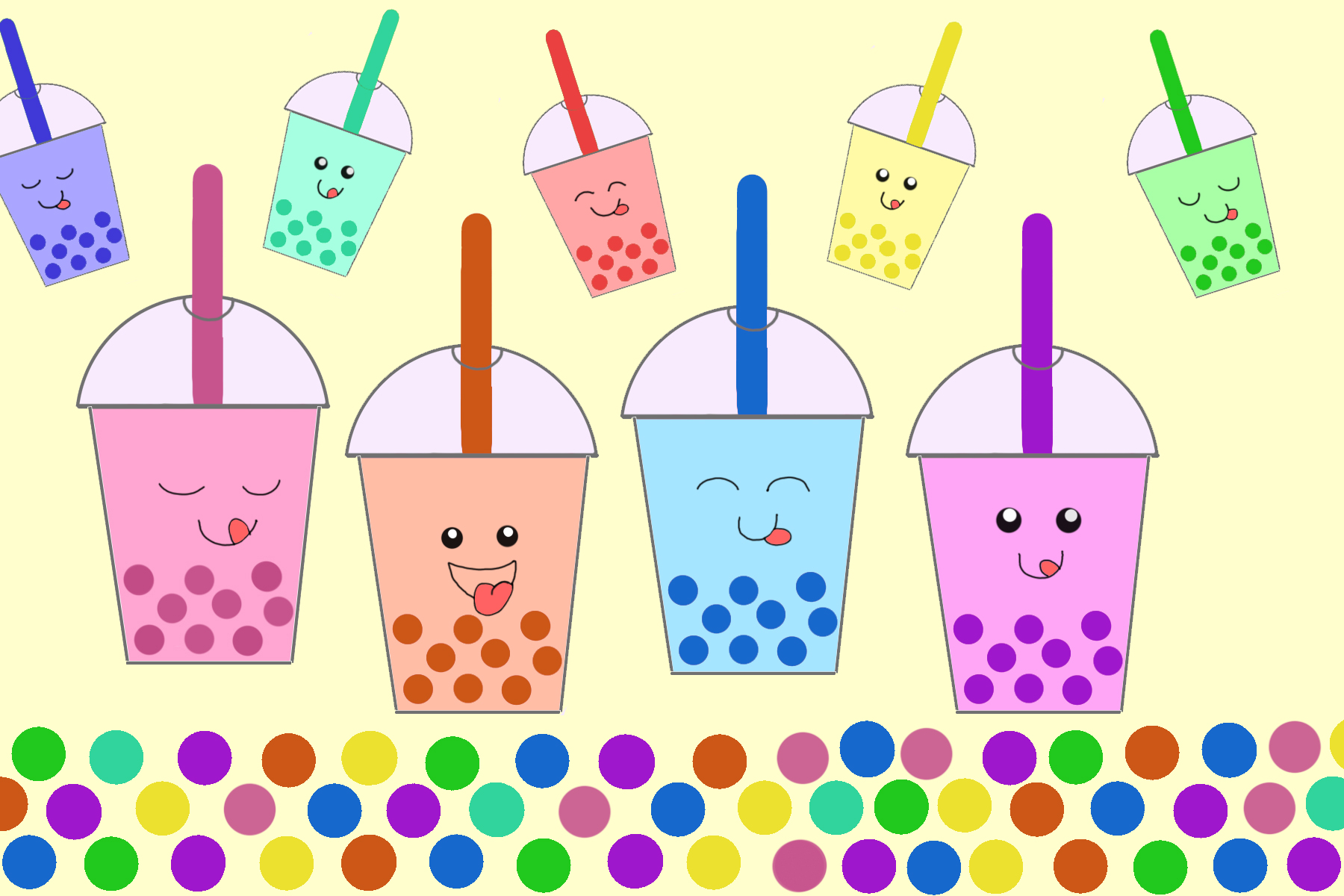Bubble tea, pearl milk tea, bubble milk tea, boba — no matter what you call it, the drink is becoming popular and for a good reason.
Personally, I would say that I consider boba an enduring friend. It has accompanied me during my transition to adulthood. It has been with me during many ups and downs. As a young kid, I viewed boba shops as a playground for entertainment. I would go to my local Quickly or Sweetheart after school to try out new flavors. I would also go to fill my stomach with snacks that the shops offered. Snack options were abundant and included chicken wings, popcorn chicken, fried cuttlefish, onion rings, etc. In addition to that, boba shops also provided a space where I could socialize and hang out with friends before heading home to hit the books.
As I grew older, bubble tea was with me as I learned about boys and dating. I would go on first dates at T4 or Gong Cha. My dates and I would then proceed to debate about the best places to find boba and the flavors offered by each. Along with being my companion during happy times, boba has also been there for me during times of heartbreak and sorrow, as I would indulge in a milk tea to comfort myself. Today, I drink bubble tea whenever, whether it’s for enjoyment, refreshment or during a social event. I am still an addict as old habits die hard. Now, the rest of the world seems to be catching up to appreciate the many facets of this unique drink.
What Is Boba?
Boba is a tea drink that was originally featured in small Taiwanese tea shops in the 1980s. It was invented in Taipei by a small food stall owner, Liu Han-Chieh, who had the brilliant idea of combining three popular, yet complementary food items into one. On a hot summer day, the owner combined shaved ice, tapioca balls and milk tea into a unique drink. This drink would be known as boba, which is slang for breasts in Chinese, as the tapioca balls bear a resemblance to breasts.
Today, bubble tea recipes feature the mixture of various teas, fruits, milk and sugar. The most common flavors include taro, Earl Grey, strawberry and oolong. But the fun flavors don’t stop there. Weirder flavors include creme brulee, rice, rose and butterfly pea flower. Toppings, such as boba, pudding, aloe vera and grass jelly, are also added for additional texture and flavor. There are hundreds of combinations to pick to satisfy all your different cravings.
Boba as a Cultural Symbol
Bubble tea was originally popular in Taiwan and East Asia. However, as Taiwanese immigrants came to the U.S in the 1990s, they brought boba. Newly established tea shops became popular with the Asian American community and bubble tea emerged as a symbol of Asian identity. Boba, up to this day, still represents the Asian diaspora. It symbolizes the struggle of new immigrants to start businesses and to make a living for themselves. These boba shops were a major source of income for owners and their families. Additionally, it represents unity. The emergence of social media has allowed for many Asian Americans to share their experiences with boba and other topics. They have relied on platforms, including Subtle Asian Traits, to share similar childhood memories of going to shops that sell bubble tea to socialize, study and to meet new people. There were intimate connections formed between these regulars and the bosses who owned the stops.
Bonkers for Boba
Boba continues to be mainstream in America. Its popularity can be attributed to marketing tactics, sponsorships and bubble tea trends that cater to American taste buds. The drinks are crafted to be sweeter to appeal to Americans and menus feature Americanized options, as shown by Boba Guys’ offering of “horchata milk tea.” Multicultural hubs such as New York, San Francisco and Los Angeles have witnessed the emergence of hundreds, if not thousands of different boba shops providing their own unique twists to bubble tea.
The bubble teas have also become a global phenomenon as it is now incorporated in other foods (including ice cream, pizza and hotpot), and also featured on merchandise. Boba chains, including Quickly and Gong Cha have also expanded internationally. They have locations in Africa, Europe, Asia and North America. Bubble milk tea has taken over the world as people are united by their common love of boba.
















